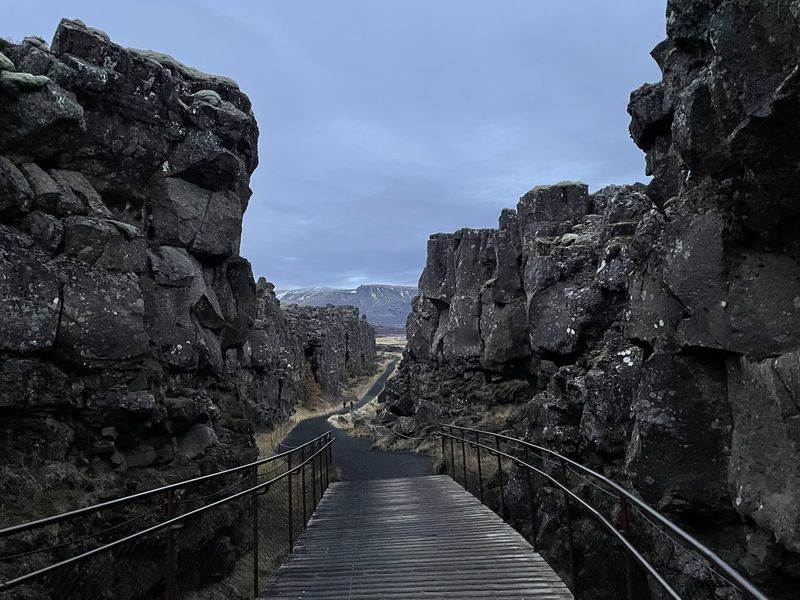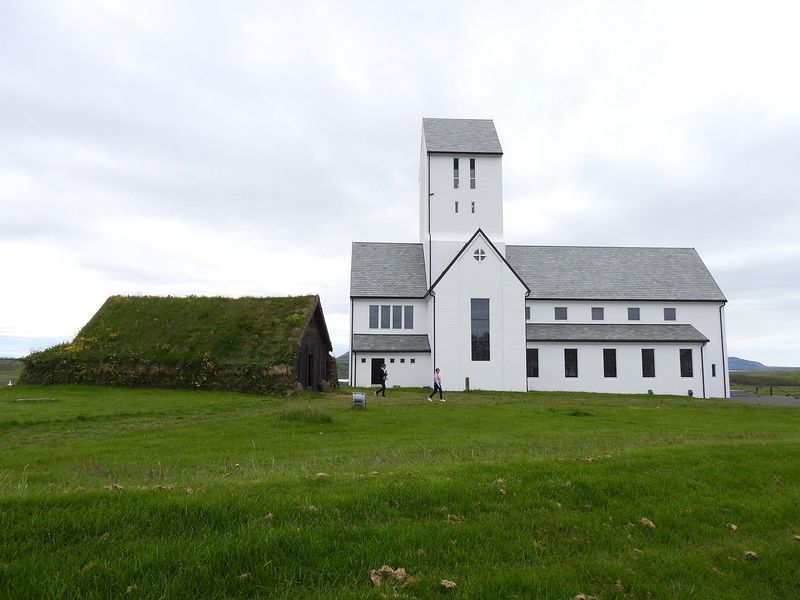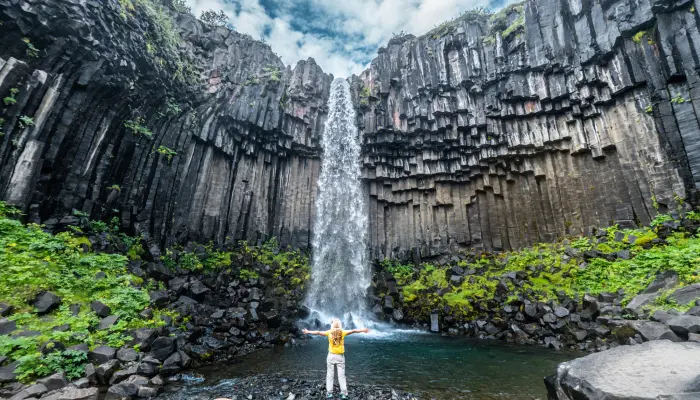If you've seen photos from Iceland, most were likely taken in the area of the Golden Circle. This circular route includes some of the country's greatest geological wonders, and what makes it even more popular is the fact that it's easily accessible to everyone!
A Bit About This Region
The Golden Circle (Gullni hringurinn) is a tourist route in southern Iceland, stretching about 300 kilometers, starting from Reykjavik and leading to the southern highlands of the country. The name of this region comes from its main attraction - the Gullfoss waterfall, which in Icelandic means "golden waterfall"! Here, you can enjoy some of the best landscapes of the country and have a unique experience. The entire Golden Circle route can be easily covered in one day, as the classic journey spans about 230 kilometers. The road is good, and the route is magical, but count on more than three hours shown by your GPS, as you'll want to constantly stop for photos. So, let me present to you the Golden Circle of Iceland through my eyes and share with you what I think everyone who visits it for the first time should see.
Kerid Crater

Kerid Crater ("The Eye of the World," as the locals call it) is the first significant landmark seen when starting the exploration of the Golden Circle. It's a volcanic lake, about 6,500 years old! Although initially, volcanologists believed that Kerid formed as a result of a huge volcanic explosion, deeper research in the Grímsnes area could not find any evidence of such an event. It's now thought that Kerid was a cone-shaped volcano that erupted and emptied its magma reservoir. Once the magma was depleted, the weight of the cone collapsed into the empty magma chamber. The current water lake at the bottom of the crater is at the same level as the groundwater table and not formed from precipitation. The lake is about 55 meters deep, 170 meters wide, and 270 meters long! While there, you can walk around the crater and see it from above, as well as descend the stairs to the lake itself. The landowners charge an entrance fee of 450 Icelandic Krona (about 3 euros) to access the crater.
Geysir

Another very popular stop for travelers on the Golden Circle is the especially active Geysir hot spring area with periodically erupting geysers! The most impressive of them, called Strokkur, spouts water up to 30 meters in the air every few minutes! Moreover, it was the first geyser described in a printed source and the first known to modern Europeans! The reason for this eruption is the contact of underground water with the hot base of this geothermal area, which heats up, and when it reaches the maximum temperature and pressure, bursts out of the geyser into the air. The water is extremely hot, and visitors should keep a distance and stay within designated areas for full safety. No ticket is required to visit Geysir!
Gullfoss

The truth is that Iceland has no shortage of waterfalls, but one reigns supreme. Gullfoss (which translates from Icelandic as "Golden Waterfall") is one of the most significant attractions you can see on this island. According to legend, a Viking threw his treasure at the base of the waterfall so that no one could enjoy his wealth after his death. In fact, it consists of two waterfalls: the upper one with a drop of 11 meters and the lower one - 21 meters, a total of 32 meters of water falling! Geologists believe that Gullfoss was formed about 5,000 years ago due to the melting of Iceland's second-largest glacier - Langjökull. It flooded the landscape and formed the Hvítá river, which fell into the gorge, creating this waterfall! Unlike other popular waterfalls in Iceland, at Gullfoss, you look down from above, not up. This means you're less likely to get sprayed with water mist! Of course, the weather in Iceland is absolutely unpredictable, and even in summer, it can rain and be windy, so always wear waterproof clothing! In addition, Gullfoss has served as the backdrop for dozens of cinematic blockbusters and TV series, such as "Vikings" and "Lost in Space". Entry to the waterfall and parking are free.
Thingvellir National Park

Thingvellir National Park was established in 1930 and is one of three UNESCO World Heritage Sites in Iceland. While there, you can admire dried lava fields covered with Icelandic moss, glacier-carved springs in the same place for millennia! One of the main attractions of the park is the exposed North American and Eurasian tectonic plates. It's one of the few places in the world where you can see and walk along a tectonic plate! Additionally, this park is very important for the country, as the first democratic parliamentary assembly was elected there in 930 AD, and it also served as a court! Another important reason why Thingvellir is so significant for Icelanders is that it was there that, in 1000 AD, the decision was made to abandon paganism and the Scandinavian gods and accept Christianity under the threat of an attack from Norway. Finally, the park houses the Silfra glacial rift - one of the top ten diving spots in the world with a scuba tank! Entrance to the park is free, but there is a fee for parking. There is a tourist information center at the entrance where you can learn all about the park and its history.
Skalholt

Skalholt is one of the most historic places in Iceland. It's part of the Golden Circle route and for over 700 years was the scene of the most dramatic events shaping the political, spiritual, and cultural life of the country! The current Skalholt Cathedral was built in 1963 and is the tenth cathedral on the same site, the first being erected in 1056. It is known for its elegant architecture, beautiful sanctuary, and impressive stained-glass windows. The cathedral also houses the tombs of all bishops, a museum of historical artifacts, and a mysterious underground tunnel in the basement of the church! Entrance to the cathedral is free, and tours for groups of 10 or more are offered for a moderate fee.
Farms

Of course, a journey along the Golden Circle would be incomplete without visiting local farms in the area! There, you can get acquainted with Icelandic rural life and have an amazing experience. The locals are very friendly and make guests feel at home. They usually offer coffee or tea and Icelandic pancakes, telling about their daily life and agriculture in Iceland. These are poor people trying to earn extra income from agritourism. So don't be surprised by the presence of a kind of shop on each farm with local products and handmade souvenirs. And, of course, the highlight is the farm animals, the most popular of which are Icelandic horses, sheep, cows, pigs, and poultry!
Where to Stay
Accommodation in Iceland is very expensive. What we call the price-quality ratio is absent here, as all hotels are overpriced. If you undertake this journey, I recommend not staying in just one hotel, guesthouse, or rented room, but choosing a suitable option depending on the stops in your program. My suggestion is located in Reykholt - the guest house Fagrilundur.
How to Get Around
The most sensible way to travel the Golden Circle of Iceland is to rent your own vehicle. While Iceland is expensive in many ways, car rental is not prohibitively expensive. Thus, you will have the opportunity and flexibility to explore everything you want, at your own pace. Another option is to join a group, as dozens of companies offer organized tours on buses from Reykjavik.
What to Eat
Icelandic cuisine is considered one of the most unusual in Europe. It is mainly based on meat such as lamb and lamb, various soups, as well as fresh and dried fish. The truth is that strange dishes such as shark hakarl or pudding are no longer consumed by locals but are still present in restaurants for tourism purposes! Nevertheless, it is important to know that food in Iceland is very expensive, a dish in a restaurant can cost from 20 to 40 euros! Therefore, many locals and tourists resort to street food, the most popular of which is a hot dog. The choice of food in this part of the country is limited.
Useful Information
To travel the Golden Circle of Iceland, you need a passport or a new type of ID with data in Latin letters. Icelandic is used in the Golden Circle area of Iceland. However, most residents, even the elderly, speak English, so feel free to ask for clarifications in English. The country's currency is the Icelandic Krona (ISK), and its current exchange rate is 1 euro = 150.90 kroner. The weather in Iceland is unpredictable and can change in a matter of minutes. There are no hot days here, only less cold ones, so if you want to explore the country from edge to edge, the best time is summer. Temperatures are relatively high, and the days are long enough. However, if you want to see the Northern Lights, you need to come in winter. Then the cold and wind will be very strong, daylight will be minimal, but this unique phenomenon combined with snow-covered landscapes will reward you!
